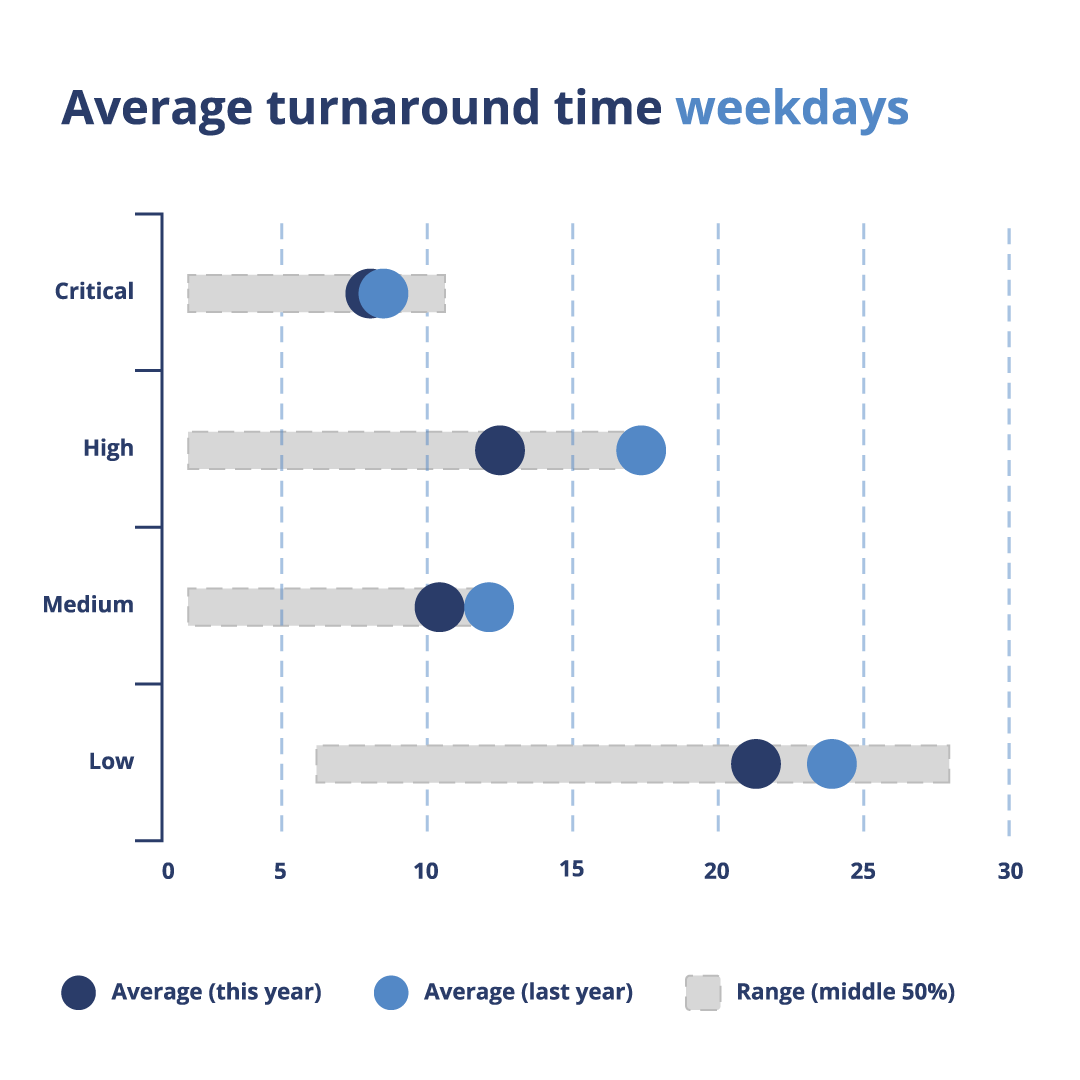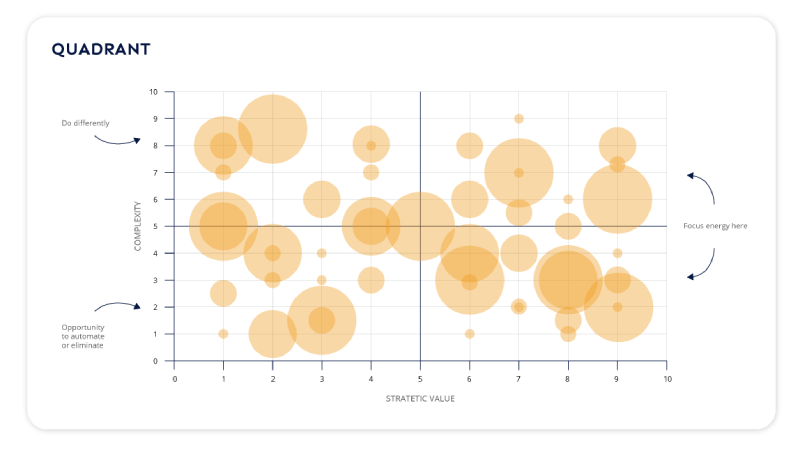Legal Data Analytics Fundamentals: The When
We recognize that the phrase “legal data analytics” can be intimidating for in-house Legal Departments, and we understand. In this four-part series, we will cover the basics of legal data analytics for in-house teams. The fundamentals of legal data analytics are universal, and data collection can be simple and relatively painless. We promise.
“The when”
There are two key timing elements for Legal Departments: turnaround time and working time.
To be sure, sluggishness can be a pain point - this is clear in a 2018 survey by Acritas, which asked outside counsel how Legal Departments could improve. 25% of respondents said their in-house clients failed to respond quickly to inquiries and 42% said their clients failed to set realistic timelines.
More relevant than outside counsel satisfaction, however, is the in-house Legal Department’s perception among its own business clients. Within this context, the two 'when' metrics are critical to helping Legal Departments understand and guide expectations and delivering on legal requests within these expectations.
Side note: In the GC350, a “benchmarking study for the in-house community,” 27% of in-house legal teams reported seeking formal feedback from business clients. Of those, 70% sought direct input on their speed of response.
In-House legal request 'turnaround time'
Your business clients care 'when' they will receive the response to their legal request. Tracking legal matter 'turnaround time' from receipt of a legal request through to completion gives your In-House Legal Department clear data about average turnaround times and helps to inform your business clients about what they might expect, based on the priority, size and content of their legal request.

Legal Department analytics can help answer the key question “How long will this be legal?” By tracking a legal matter through its life span and charting where it sits and for how long, you will understand how long a legal request (or a body of legal requests) was with the Legal Department or an outside firm for execution, with the ‘other side’ for response, the business unit for information or instruction, or with the C-suite for authorization. This informs your in-house legal team to guide business clients on expectations, and informs you about bottlenecks that can be addressed in the future to achieve faster legal request turnaround time.
Indeed, it may appear that a project takes the Legal Department six weeks to finalize… when five of those weeks were spent waiting on a response from the assigning business unit. No in-house legal team wants to appear incompetent or slow. This information can rebut that perception – while also providing means to improve the process and guide your business clients on expectations. Consider a comprehensive set of matters: Where are the recurring holdups, and how can we expedite or eliminate them? Are there self-help tools or policy changes that would help?
Don’t underestimate the business importance of measuring and addressing turnaround time. If legal operations software can empower a Legal Department to cut the time needed to approve a major contract from six weeks to four weeks, the company could close nearly 40% more deals and/or dramatically improve its cashflow.
How long will that take (working time)?
We acknowledge two truths: The time spent working on a legal matter is not necessarily a reflection of its value, and most in-house lawyers aren’t eager to go back to firm-style timesheets. We certainly won’t encourage you on a futile crusade on the latter. However, knowing how long a project will take, even in the most basic terms will inform your resourcing, staffing and promises.
With or without a time-tracking system, a smart practice matter management system for in-house legal teams will show basic time requirements for matters and matter types. This does not need to be broken out by six-minute increments - Xakia's in-house matter management system uses 'T-shirt sizes' of XS through to XL to understand the resource intensity of work, capturing sufficient information to give you an immediate understanding of the 'working time' on each legal request.
Pair this with the legal matter’s strategic value, and you are positioned to make better resourcing decisions. Perhaps there’s a project that will take a hefty investment of time, but it’s of low importance to the business. Consider outsourcing to a lower-priced firm or legal vendor. Frequent batches of quick, significant projects could prompt the hiring of an internal specialist.

As you’re getting started in legal operations, make sure you are collecting your “when” data accurately and consistently. Xakia’s corporate legal matter management software for legal departments allow users to log this automatically – and create actionable and visual reports instantly. Schedule a demo with the Xakia team to learn how to track your “when” – and how to get time back on your side.
Want to learn more about smart resourcing?
Download our legal resourcing quadrant fact sheet to see work types and resourcing plotted on a quadrant for highest impact.
If you missed the first two parts of our series, you can find them here: The Who and The What of Legal Data Analytics. Next, we’ll tie it all together with the Why.